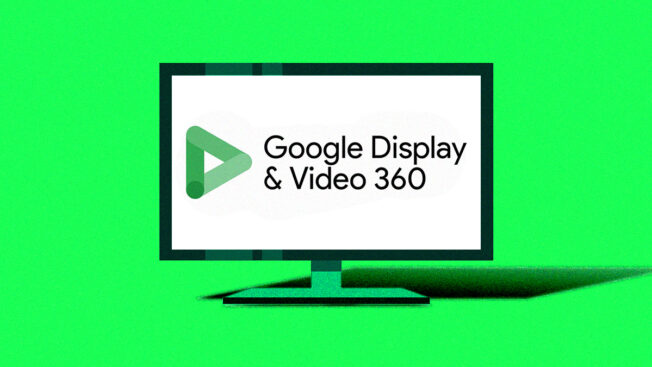Mark your calendar for Mediaweek, October 29-30 in New York City. We’ll unpack the biggest shifts shaping the future of media—from tv to retail media to tech—and how marketers can prep to stay ahead. Register with early-bird rates before sale ends!
Google used its NewFronts presentation today to tell buyers why they should be connecting to television with its DSP, Display & Video 360, a departure from previous years when the annual presentation to digital ad buyers focused on YouTube.
“If you’re not already taking a unified approach to your streaming, think about the efficient reach you’re missing out on on all of your campaigns,” said Kristen O’Hara, vp of agency, platform and client solutions at Google.
To prove its point, Google brought a bevy of executives on stage and cited numerous examples from companies, including Danone, SAP, NBCUniversal, Warner Bros. Discovery, Paramount and Albertsons Media Collective.
Mars Petcare shared how unifying all its streaming television buys on DV360 helped the company grow its reach by 12% and only reach each viewer two times, a notable stat that elicited impressed sounds from the audience, as a challenge in streaming television has been showing the same ads to audiences too many times.
The company also announced tools to make it easier to access premium streaming inventory digitally, including expanding its instant deal tool, which allows buyers to run private auctions for publishers such as Disney. This tool was previously reserved for premium YouTube inventory only. Google said it will help buyers secure quality inventory and skip complex negotiations.
The company is also rolling out a new tool called commitment optimizer to help brands manage their deals within DV360, which uses artificial intelligence to optimize the best mix of inventory across deal types. The tool can help buyers spend less time managing spreadsheets and allows more flexibility in media planning, said Clare Ritchie, svp and global head of programmatic and media in-housing at Omnicom Media Group, who helped develop the tool with Google.
And finally, Google announced that it was open-sourcing its tech tool Publisher Advertiser Identity Reconciliation (PAIR). Industry standards body the IAB Tech Lab will help give every adtech firm access to the protocol, which helps advertisers and publishers share first-party data, particularly via clean rooms.
All these moves come as adtech firms that once specialized in populating websites with banner ads are looking to command lucrative TV budgets.
Over the past few years, major adtech firms like The Trade Desk, Magnite and PubMatic have all rolled out tools to help brands transact more streaming television spend programmatically. However, much of streaming television is still transacted via insertion orders, a manual buying process.
Open-sourcing PAIR
Google first announced PAIR in 2022. The tool allows publishers and advertisers to securely upload their encrypted data to use with a clean room.
“PAIR is centered on a few key things: first-party data; advertiser and publisher control durability; and interoperability across the ads ecosystem,” O’Hara told ADWEEK in an exclusive interview about the partnership with IAB Tech Lab prior to the presentation. “In a nutshell, it’s going to help advertisers and publishers securely match their first-party data by encryption in a way that does not track users across the web.”
At the NewFront presentation, NBCU chief data officer John Lee said PAIR can help the media company transmit data points like people logging into its NBC Sports app, theme park visitors and movie ticket buyers with the least amount of signal loss and filters.
The IAB Tech Lab had been working on its own tech for helping brands and publishers share first-party data, called Open Private Join and Activation (OPJA). But now, the IAB Tech Lab is backing PAIR as the industrywide protocol for this task over OPJA, Shailley Singh, evp of product and COO at IAB Tech Lab, exclusively told ADWEEK.
“We feel that PAIR protocol is better. It’s more scalable. It’s more elegant in design,” said Singh, who noted that the tech lab routinely adapts protocol given to the organization by other companies.
While Google didn’t mention its Chrome browser’s delayed deprecation of third party cookies on stage, it noted how PAIR can be a privacy-first data targeting paradigm.
“Privacy may not be front and center in CTV conversations today, but trust me, that will change,” said Adam Stewart, vp of sales at Google. “We actually have an amazing opportunity to get this right from day one. Because CTV has never used third-party cookies. We can start fresh instead of recreating outdated techniques.”
AI-driven targeting
No NewFronts presentation in 2024, especially one focused on demonstrating technical prowess, would be complete without an AI-driven product launch.
Google announced the launch of a tool that will come out this summer that lets a marketer describe their intended customer base, and Google’s artificial intelligence will build matching audiences beyond who the marketer might have originally conceived.
For example, a sneaker brand might not know that reaching people in the market for concert tickets could also lead to sales, explained Bill Reardon, general manager of enterprise platforms at Google Ads. Marketers still get to decide if they want to actually pay to target the segments suggested by the AI.











